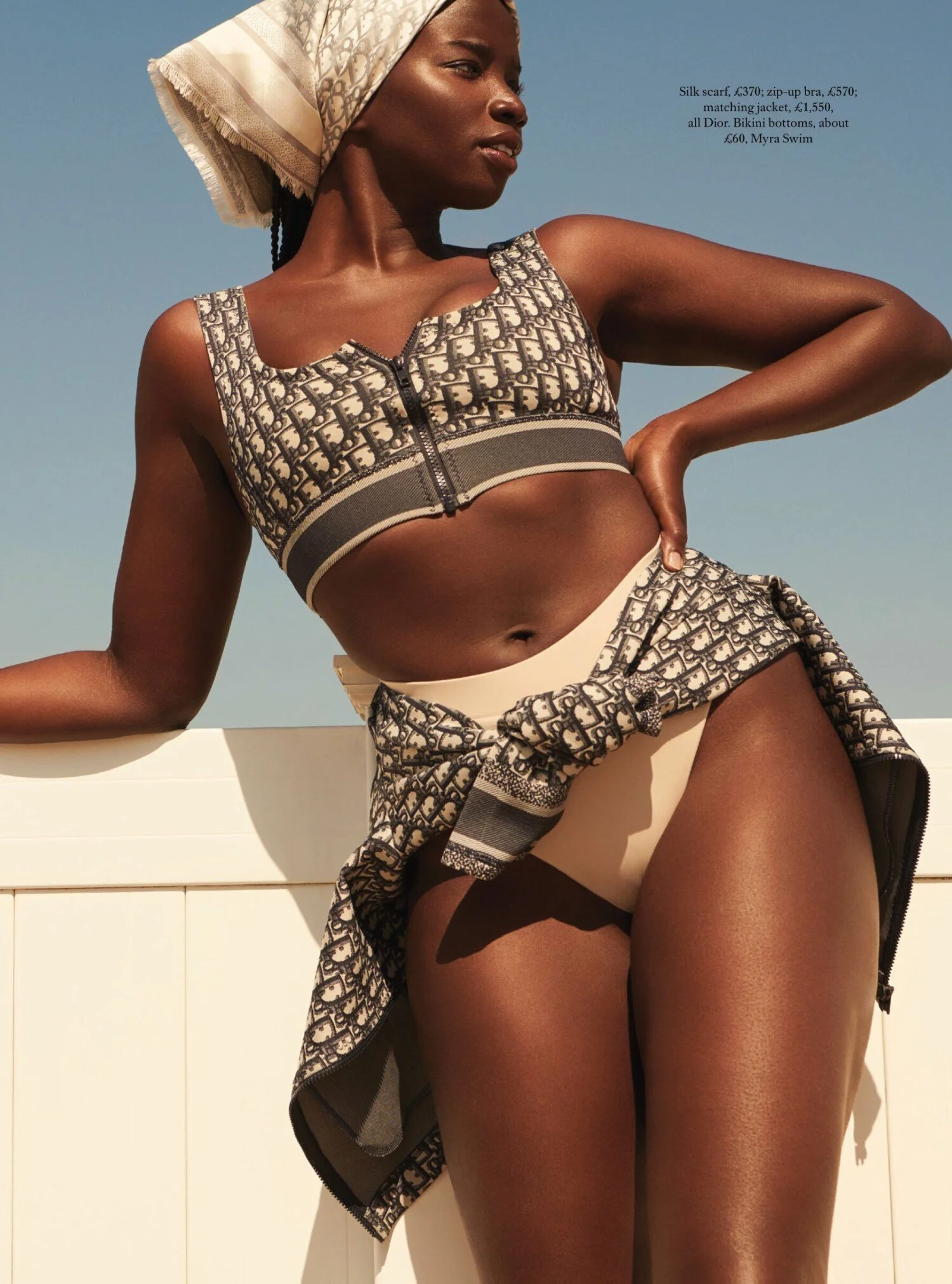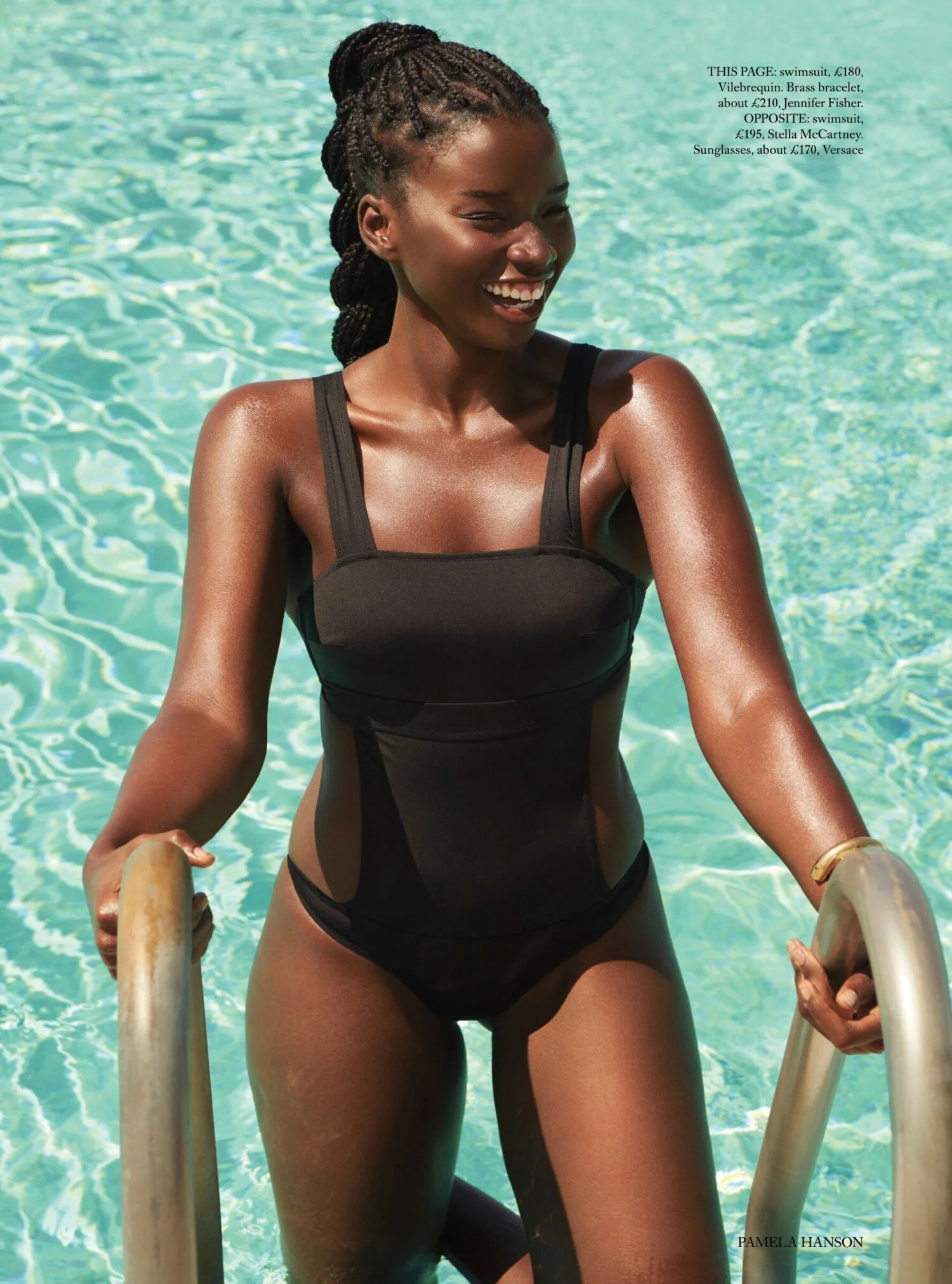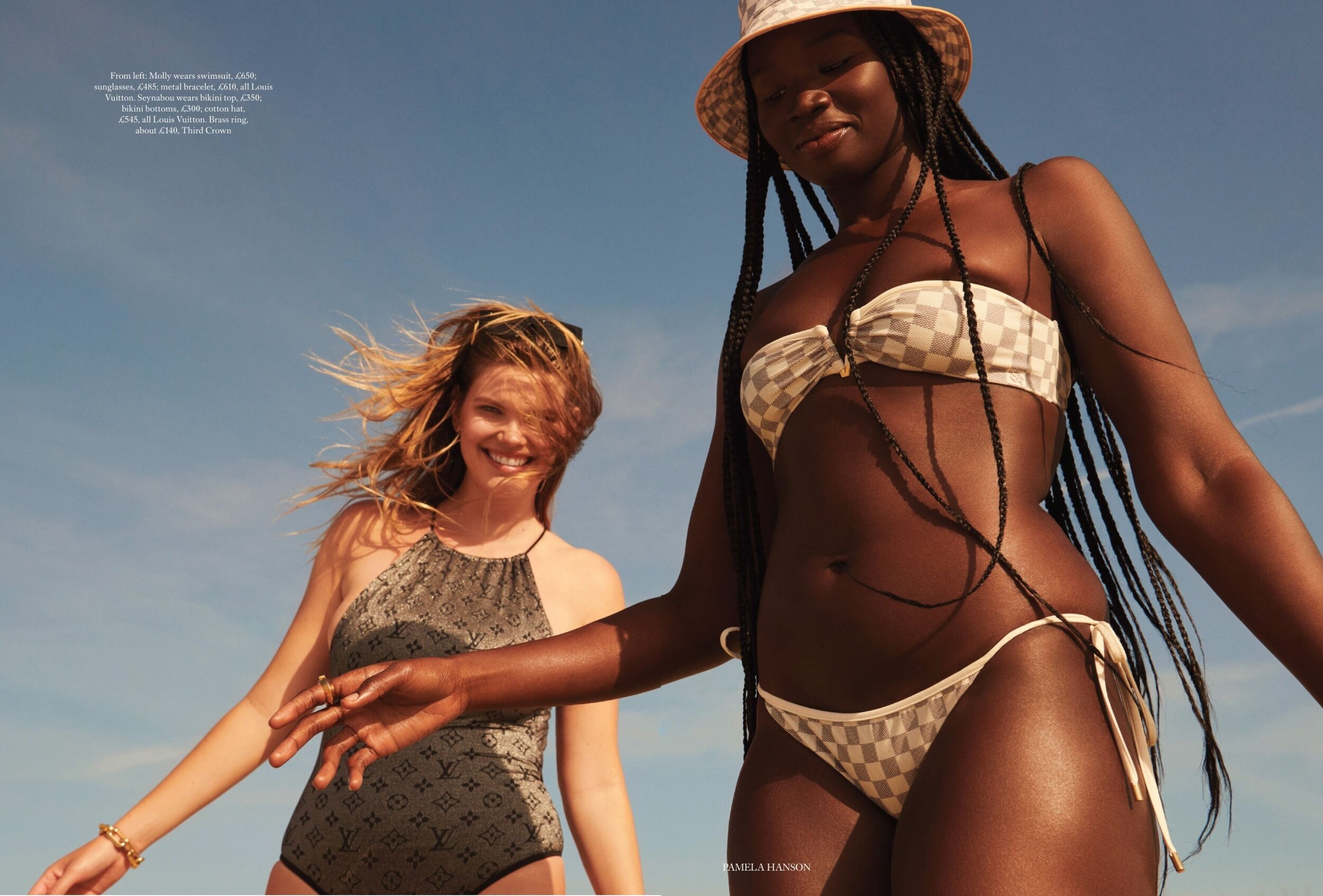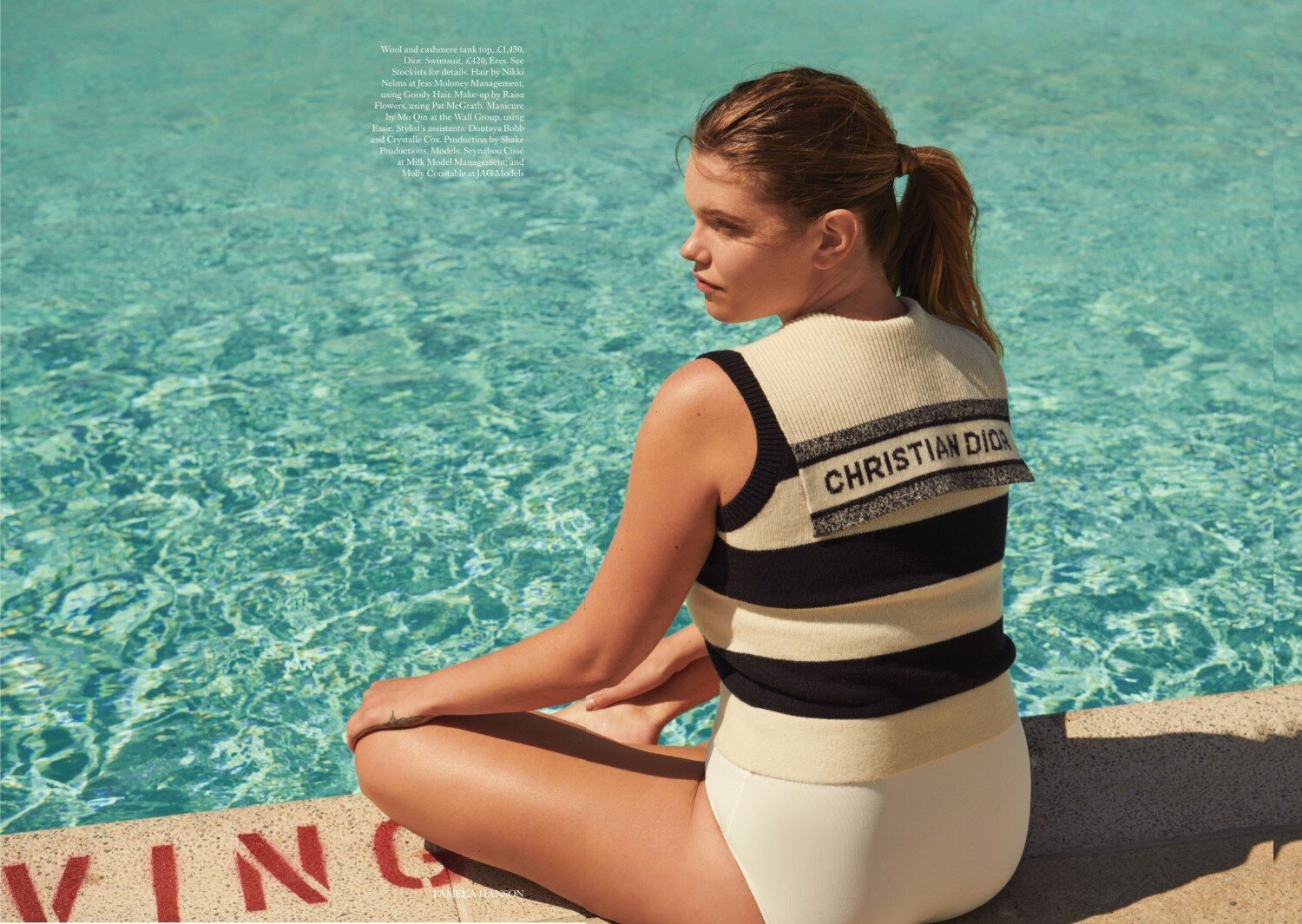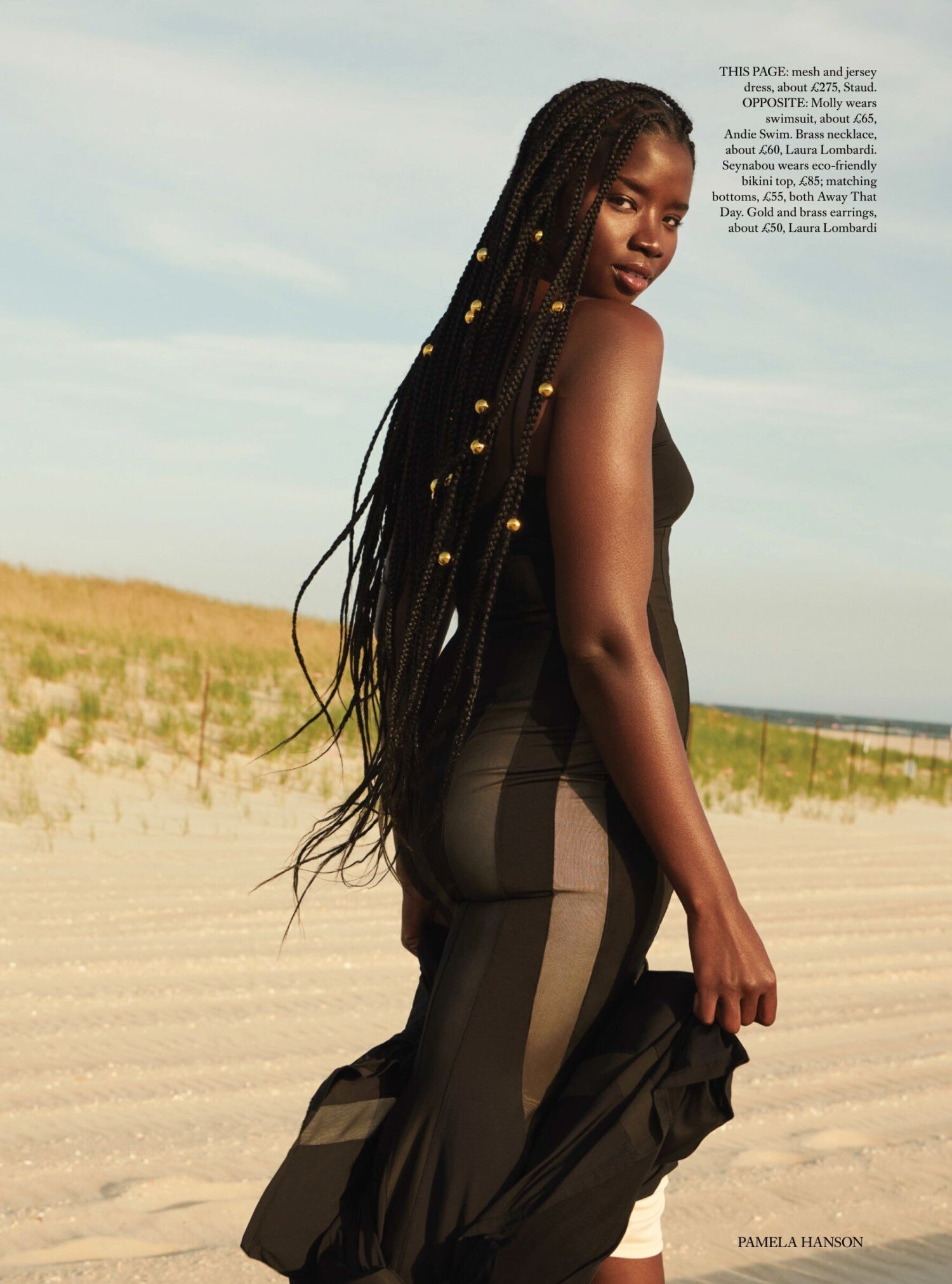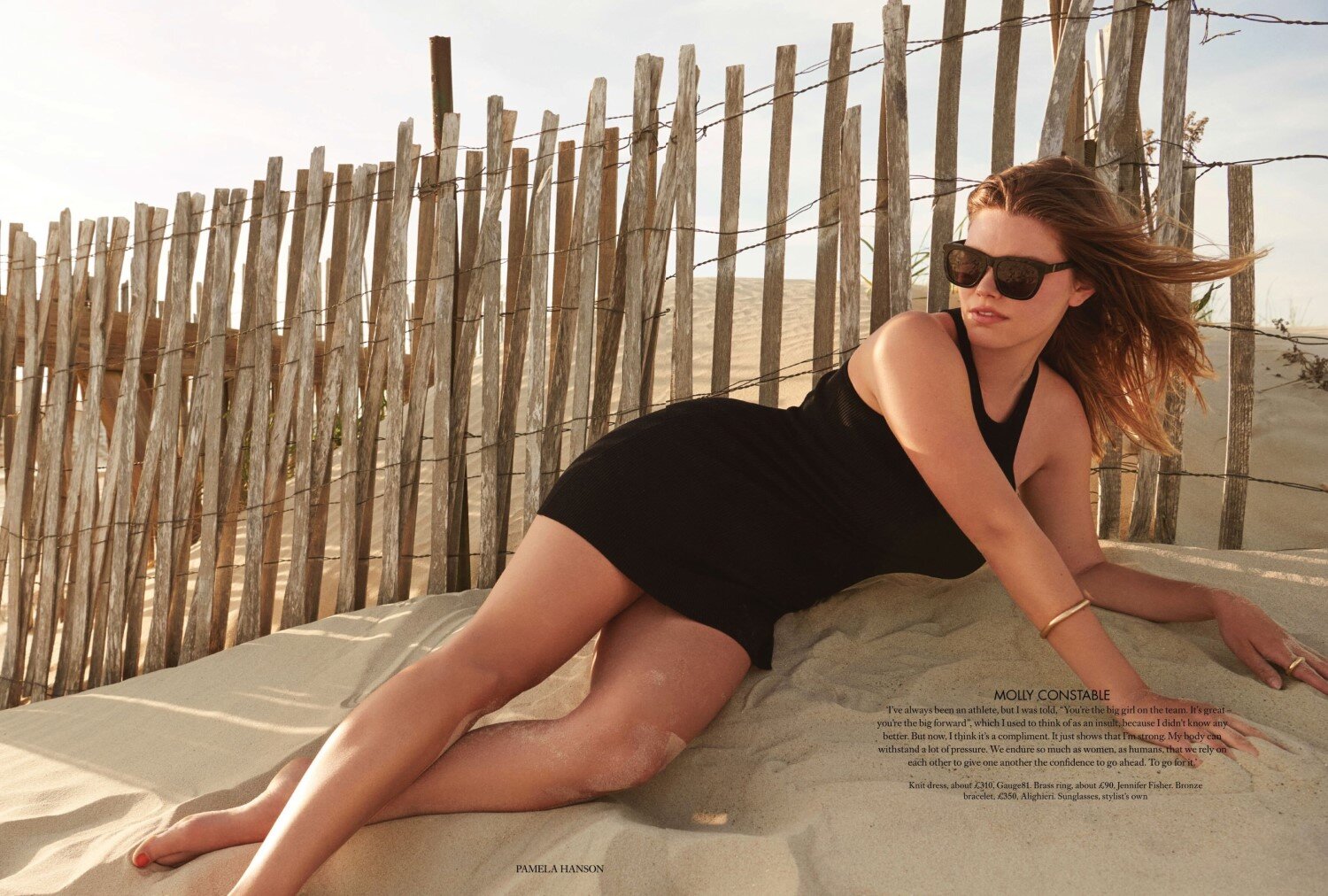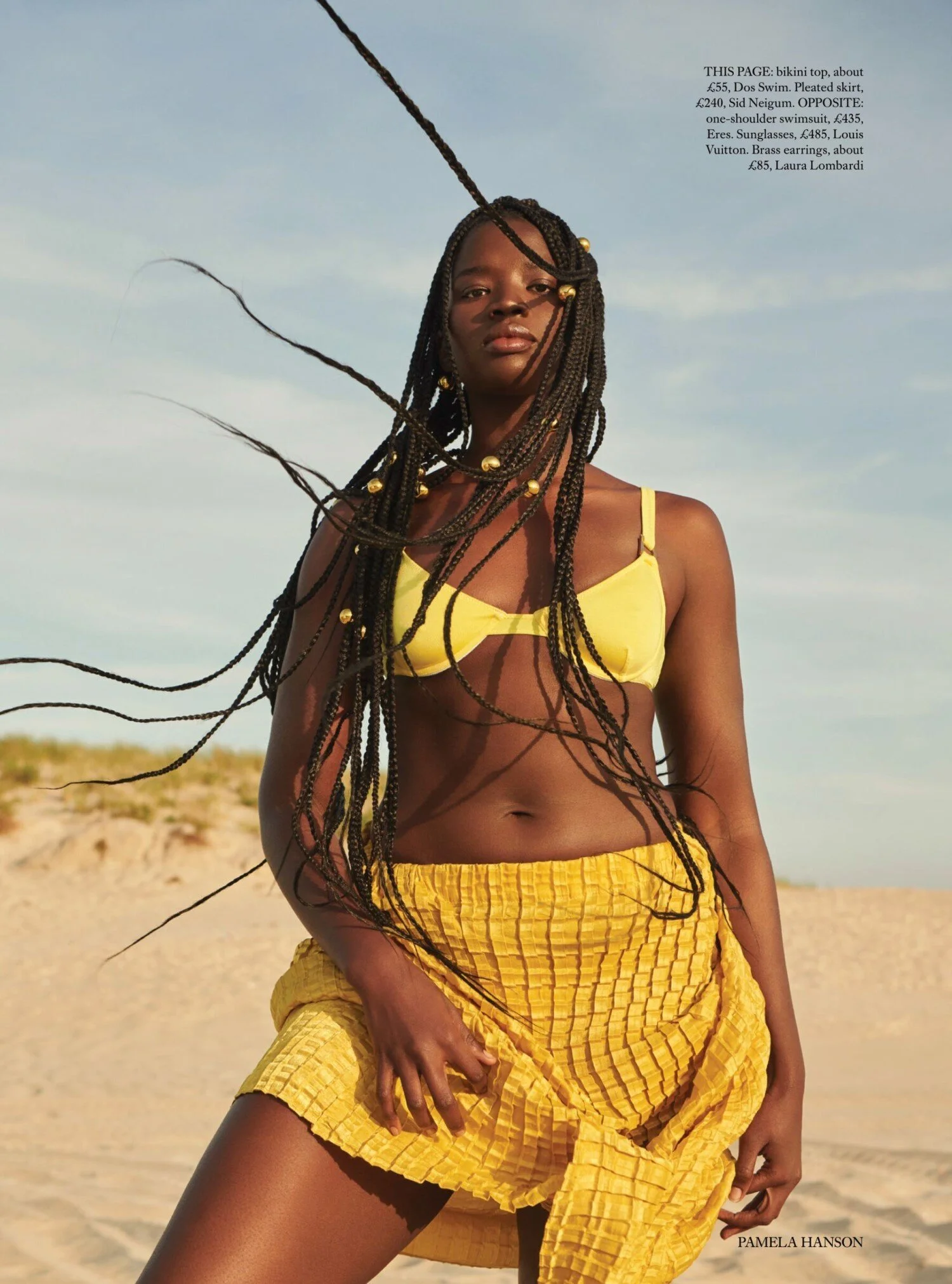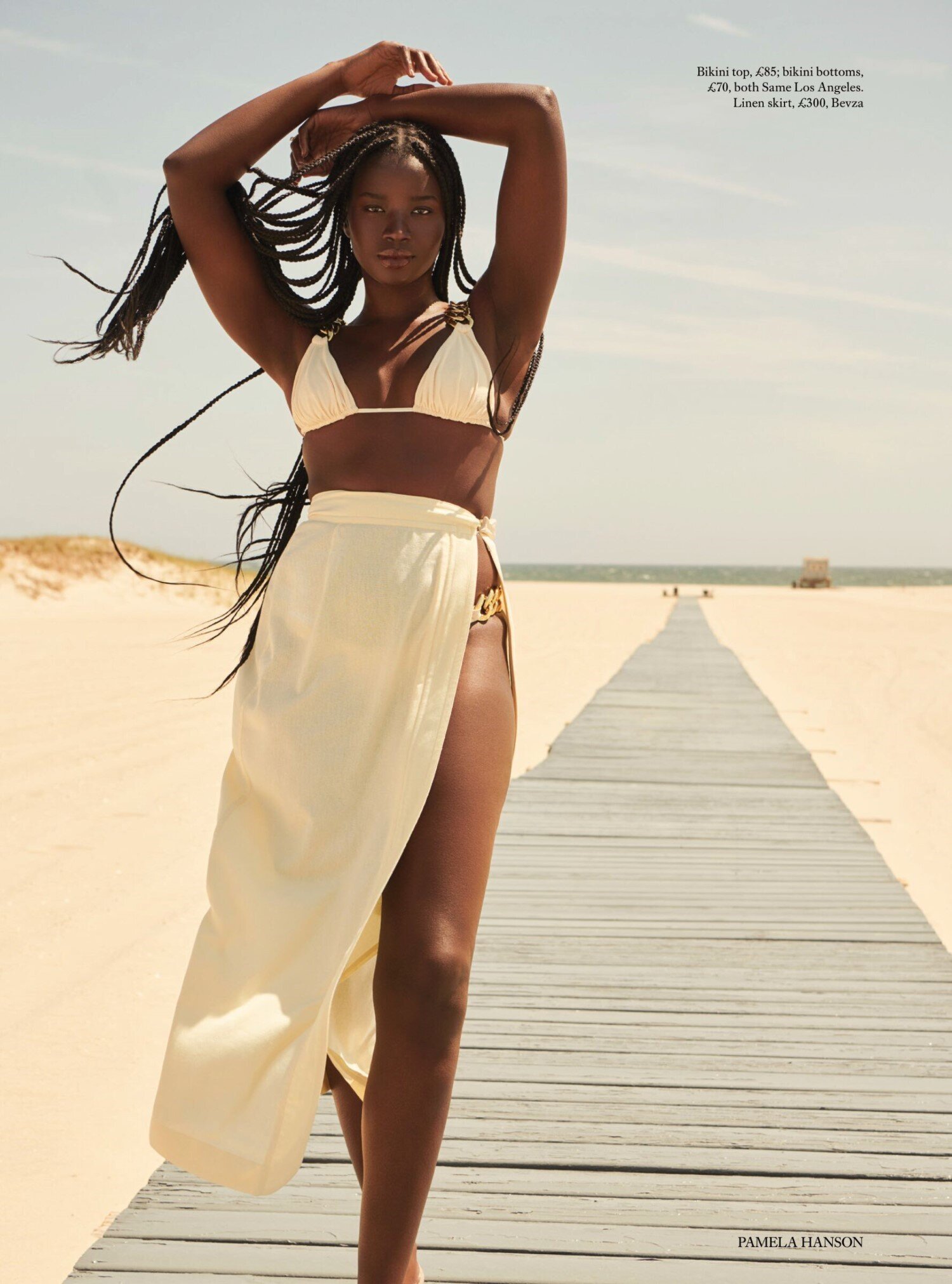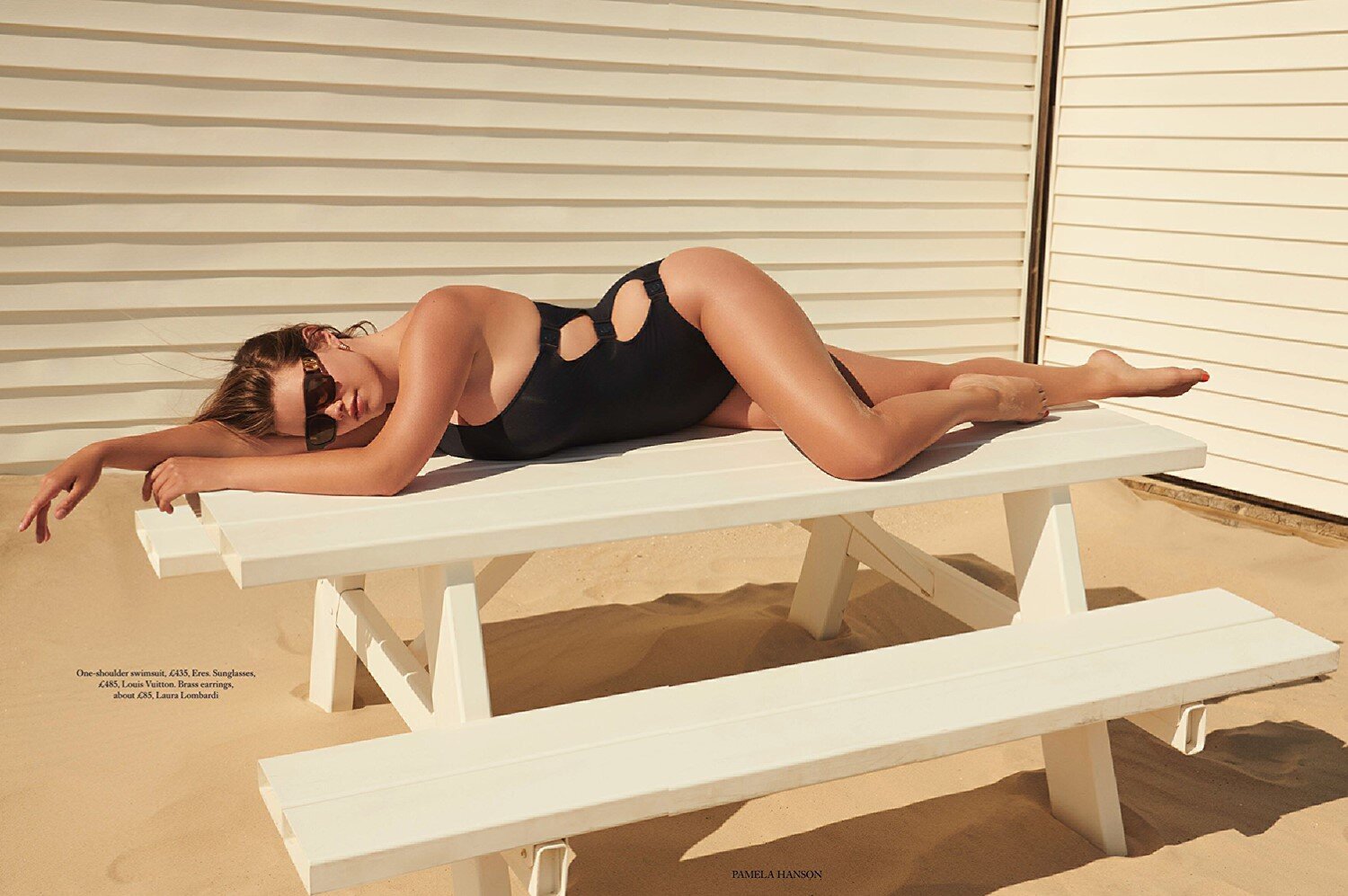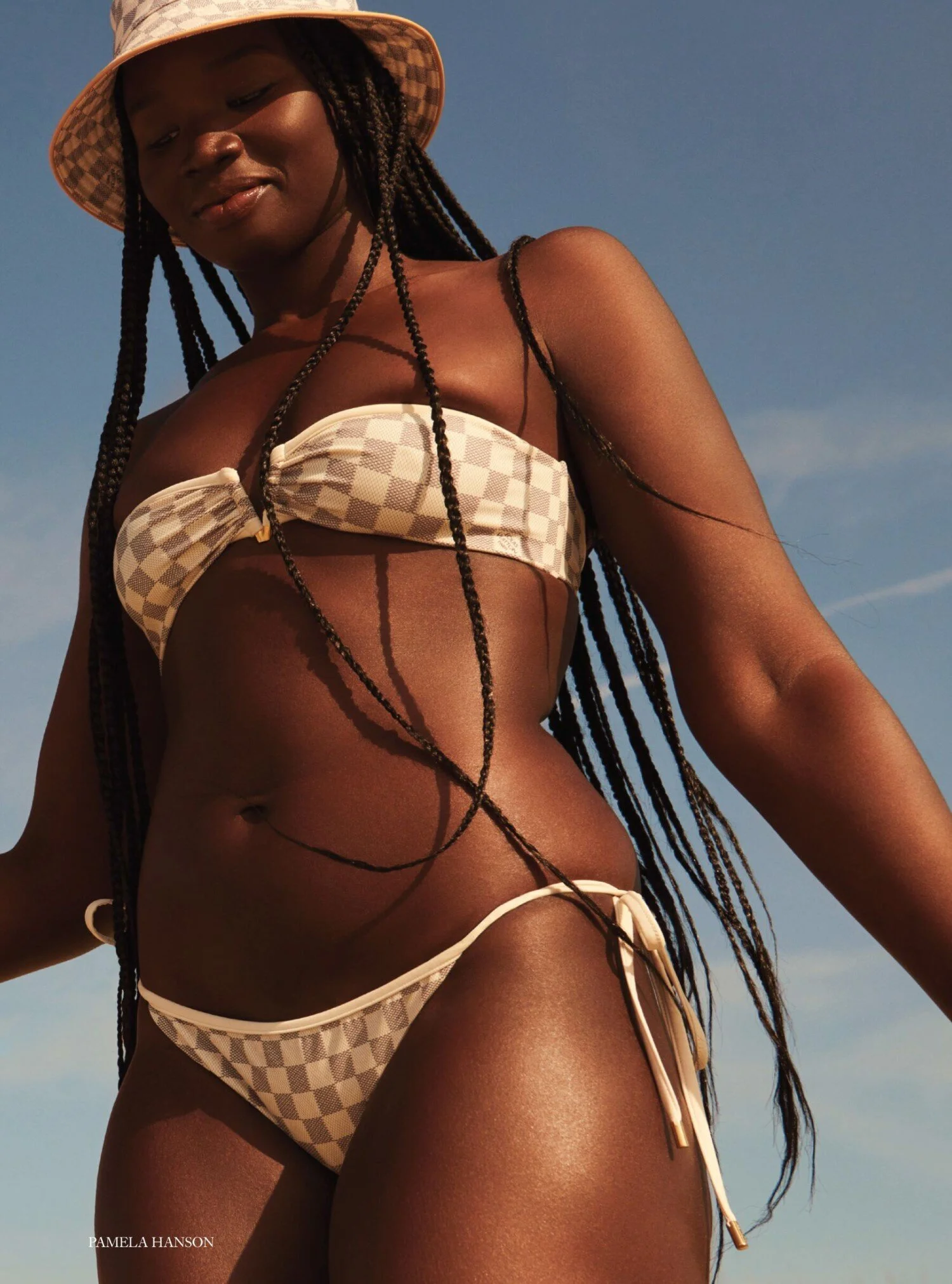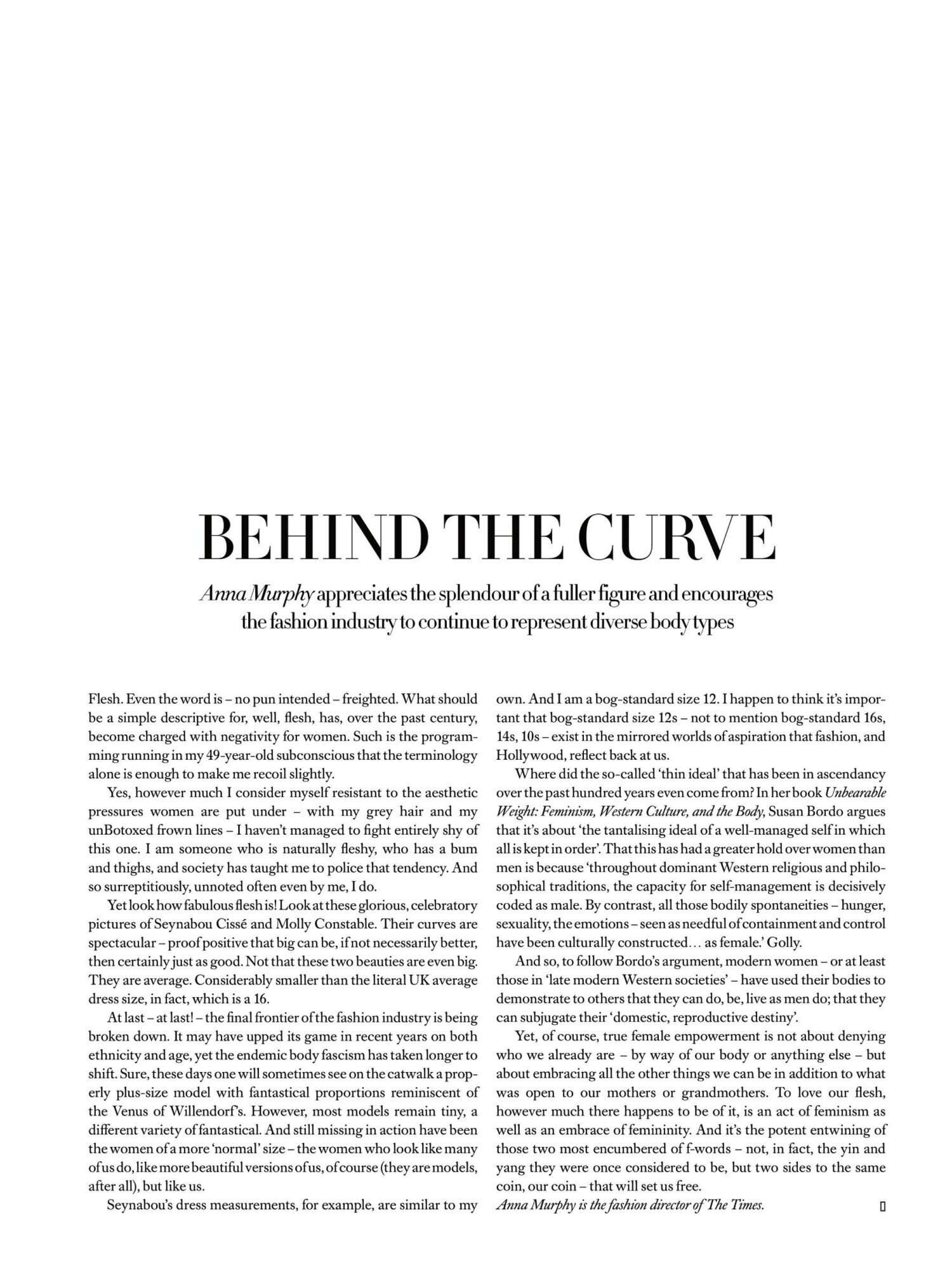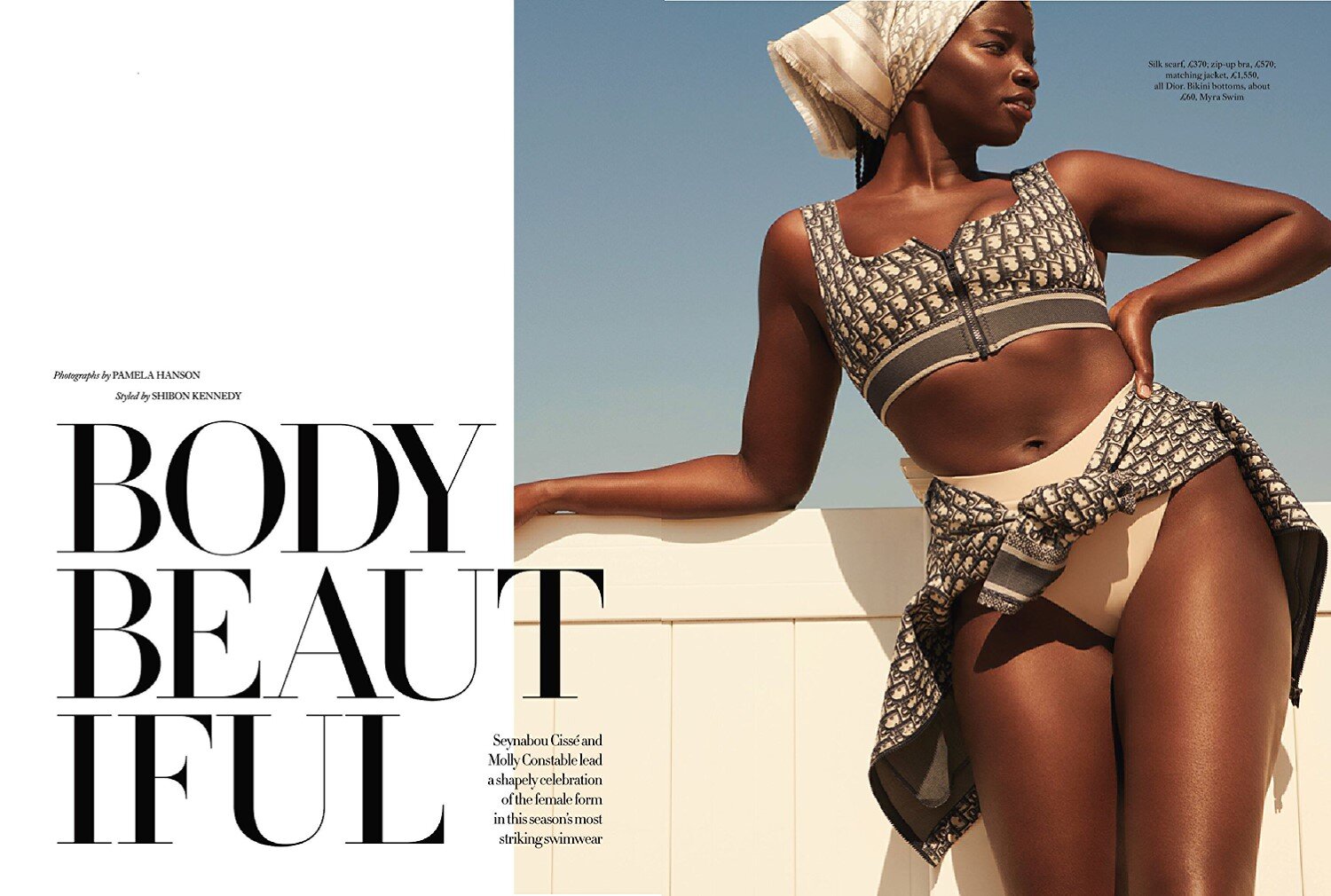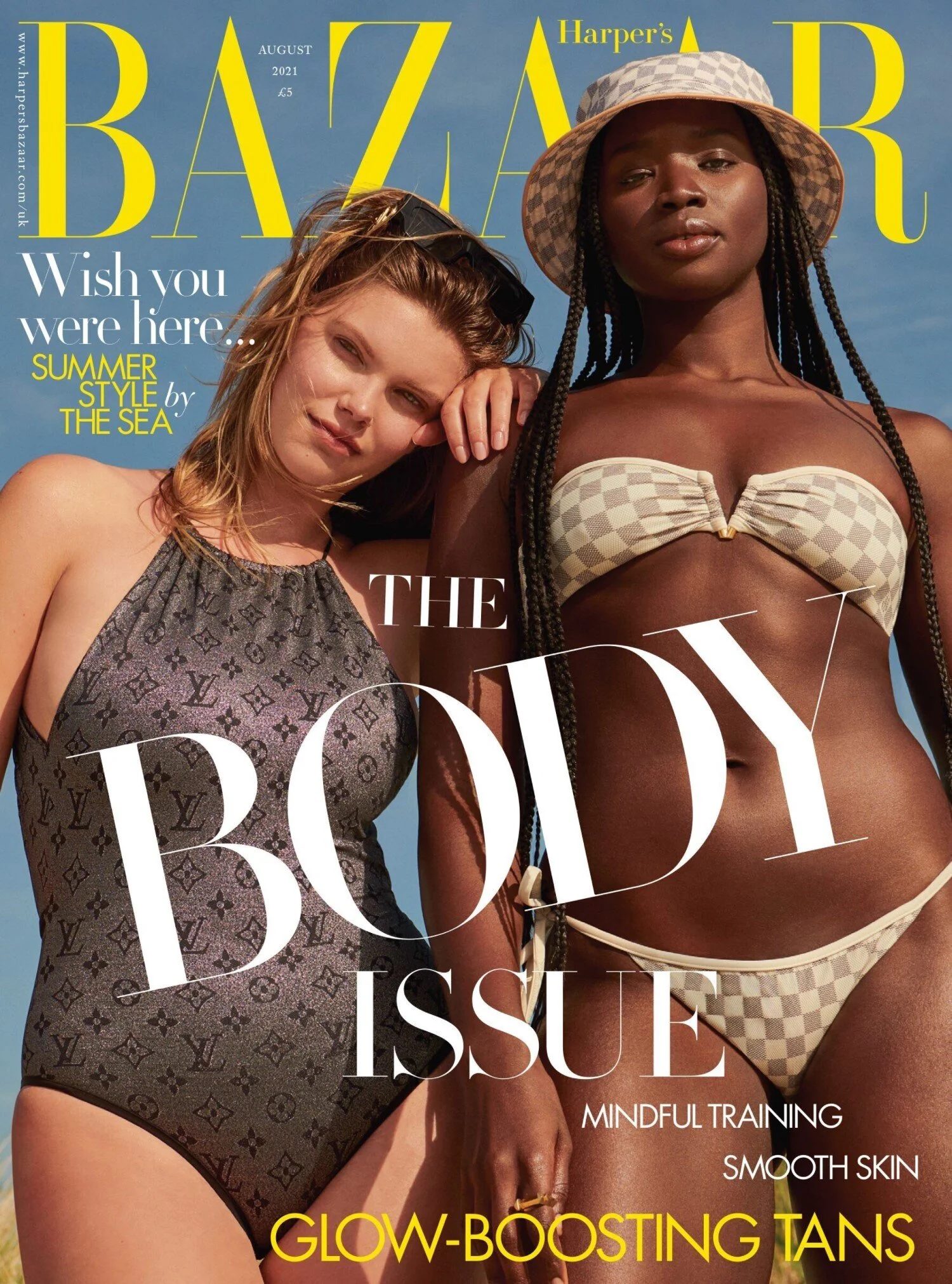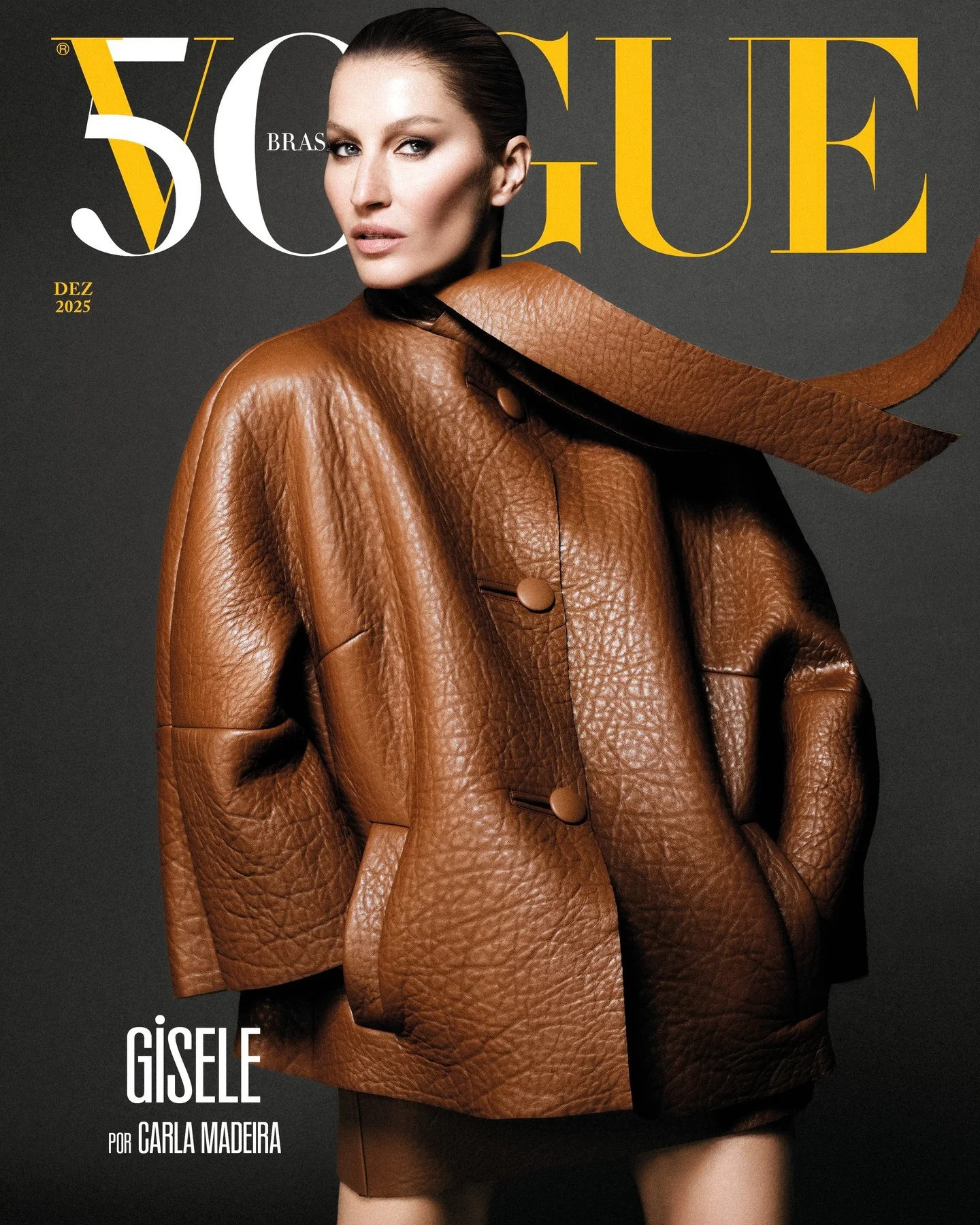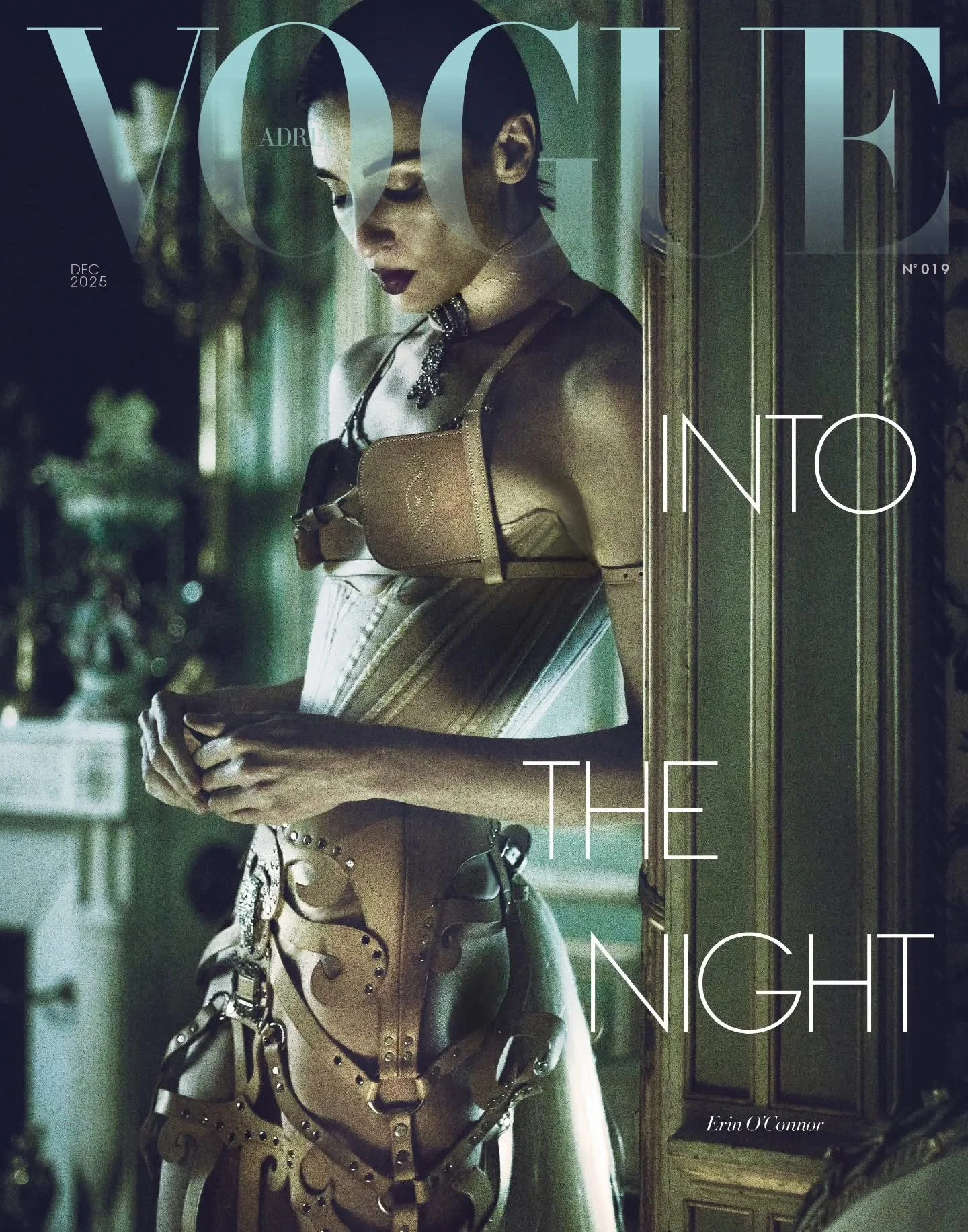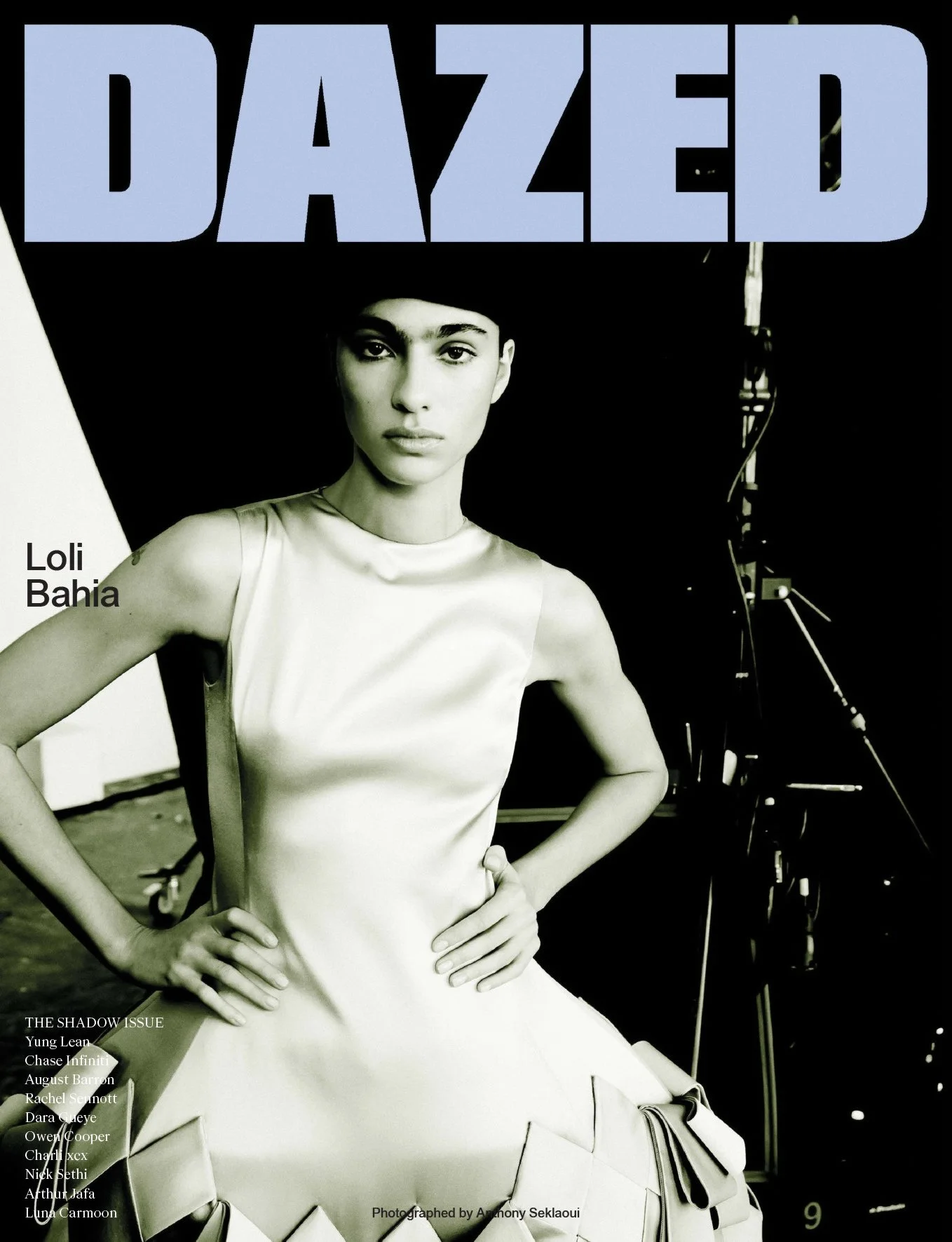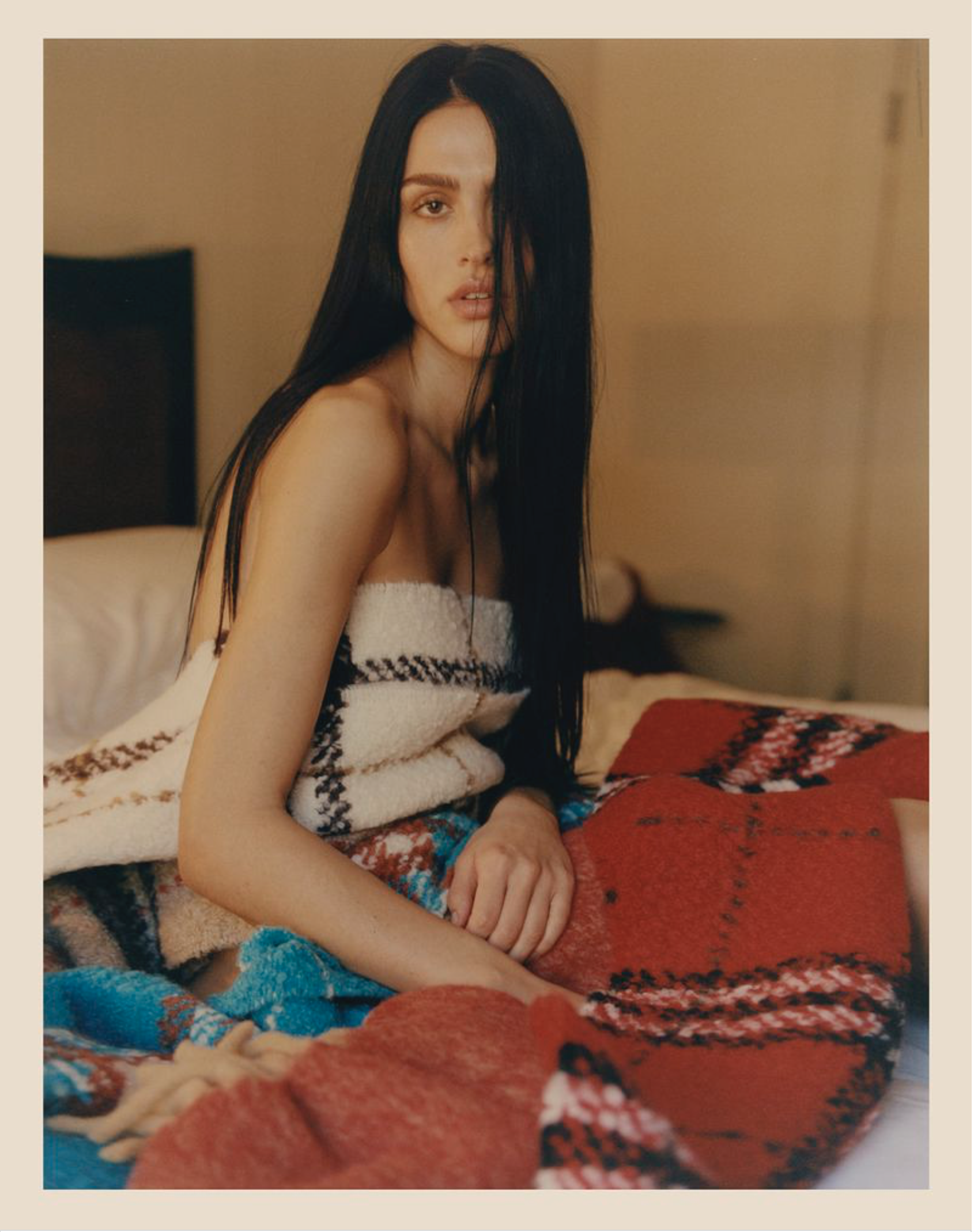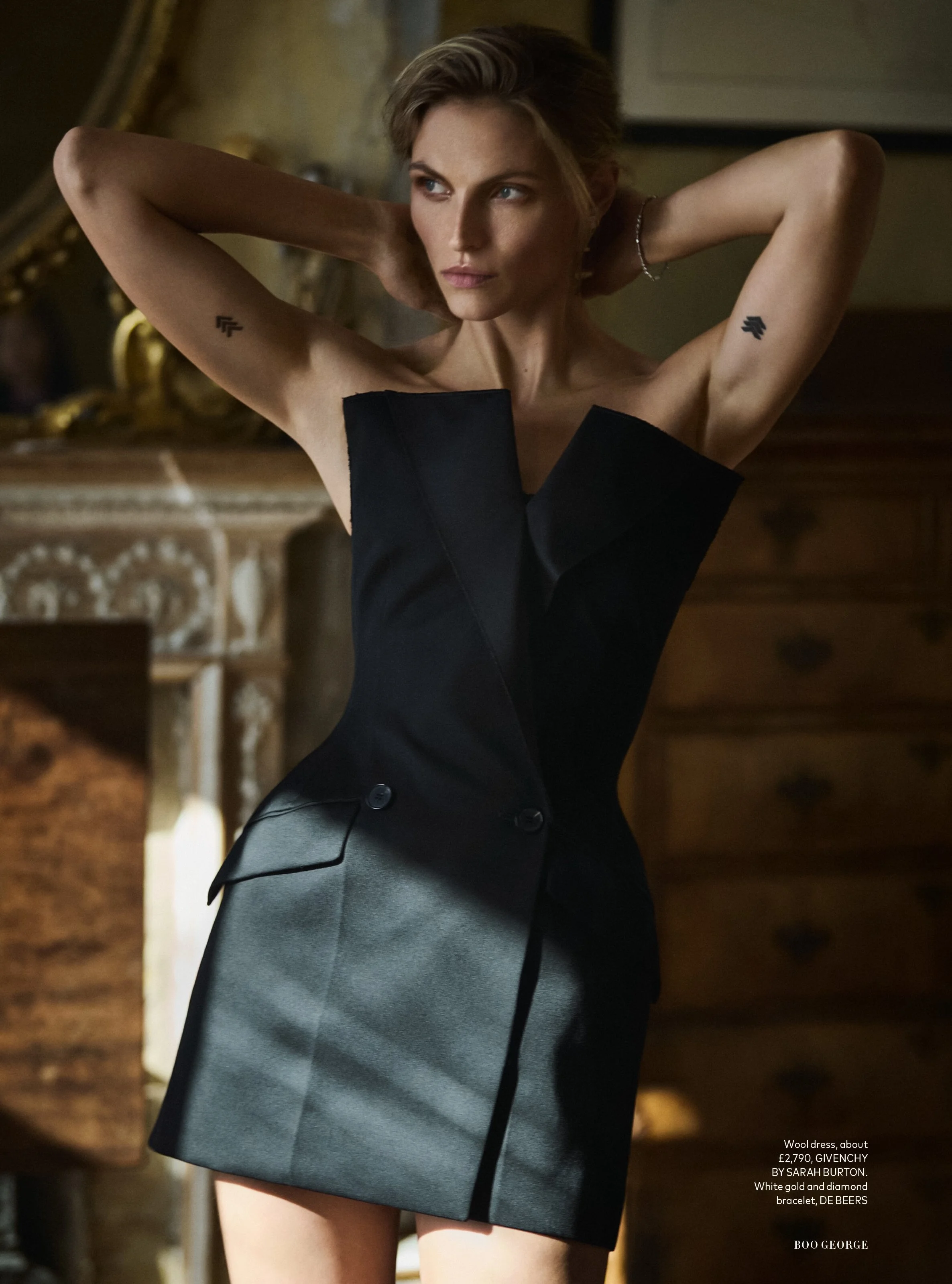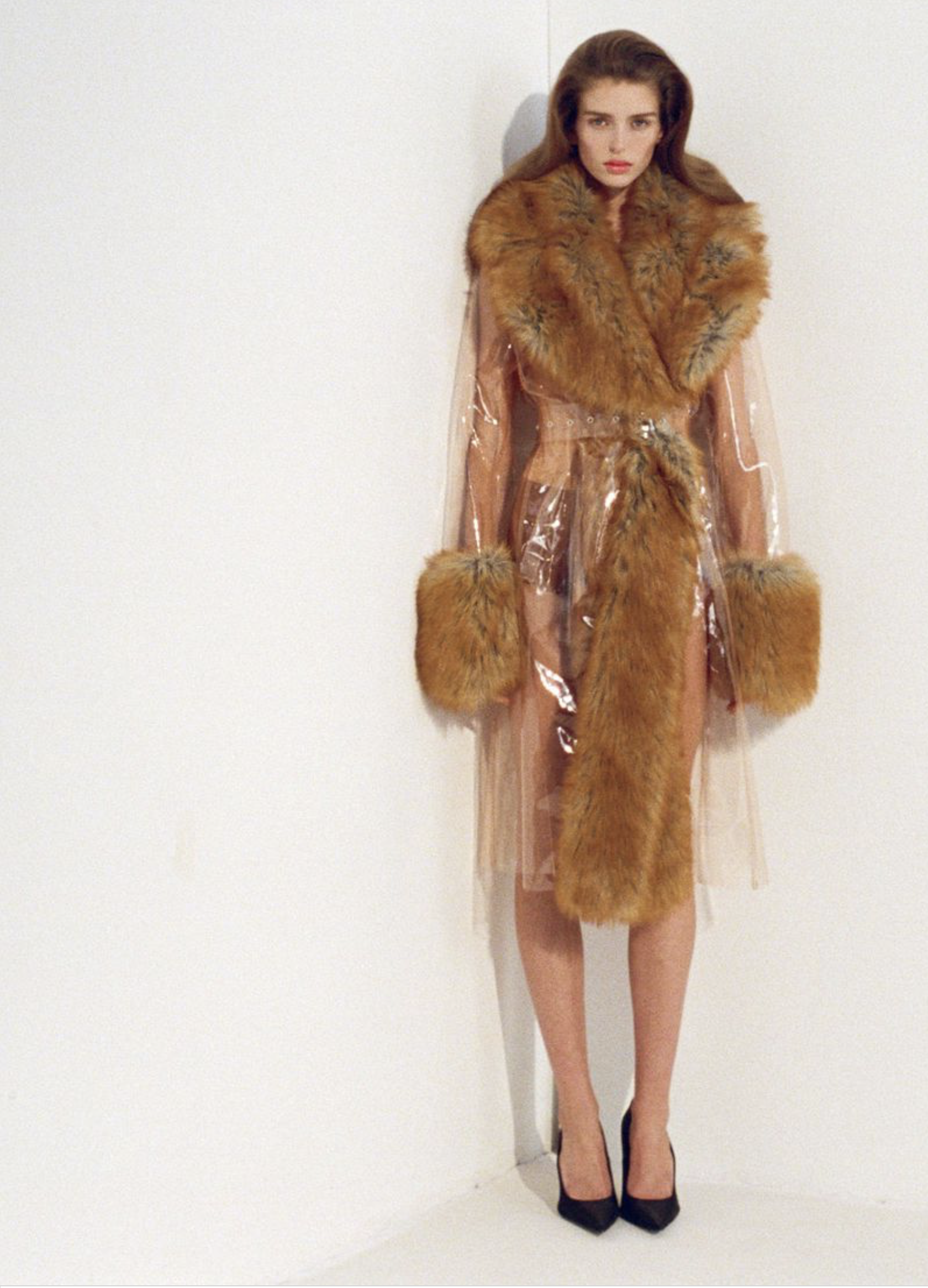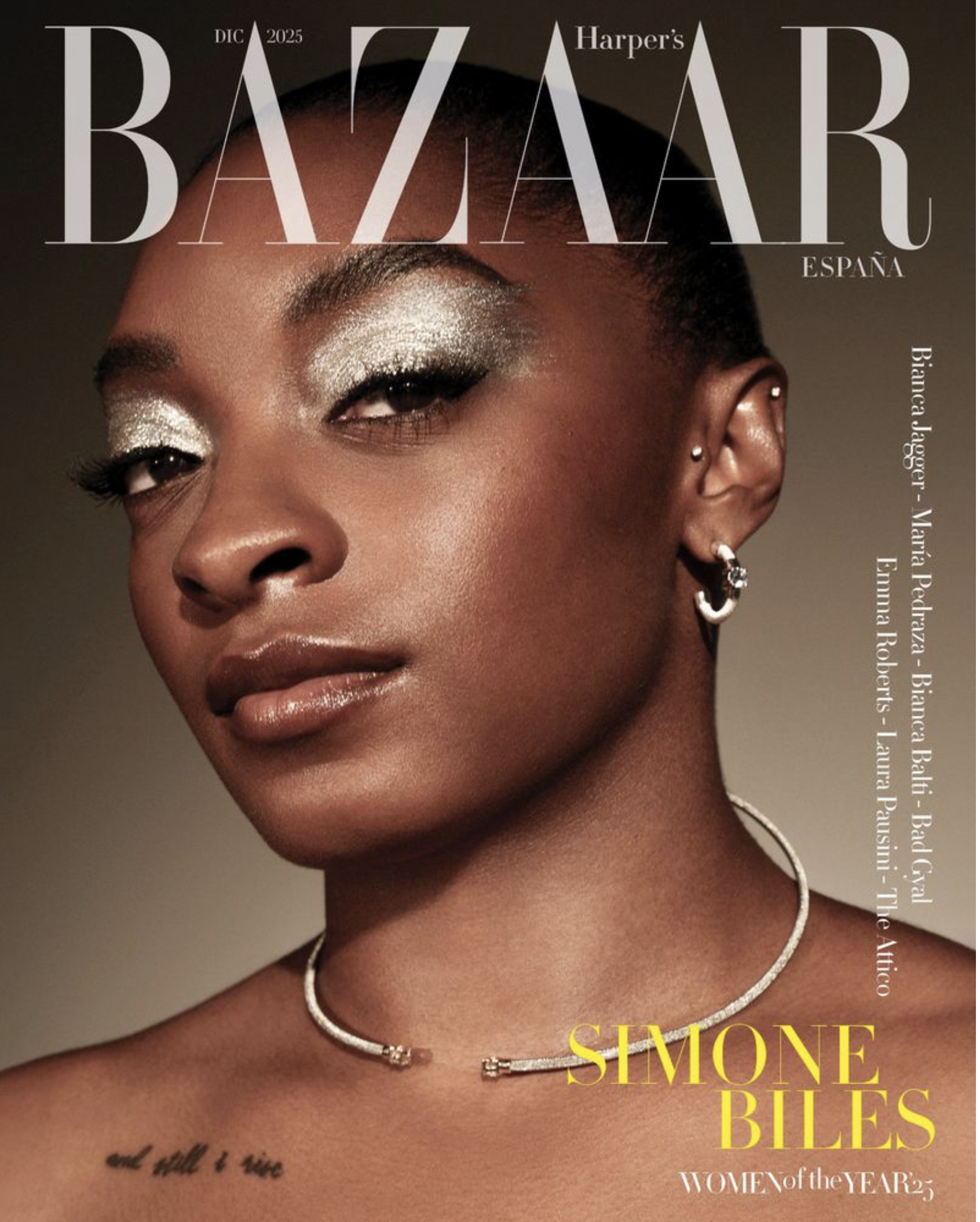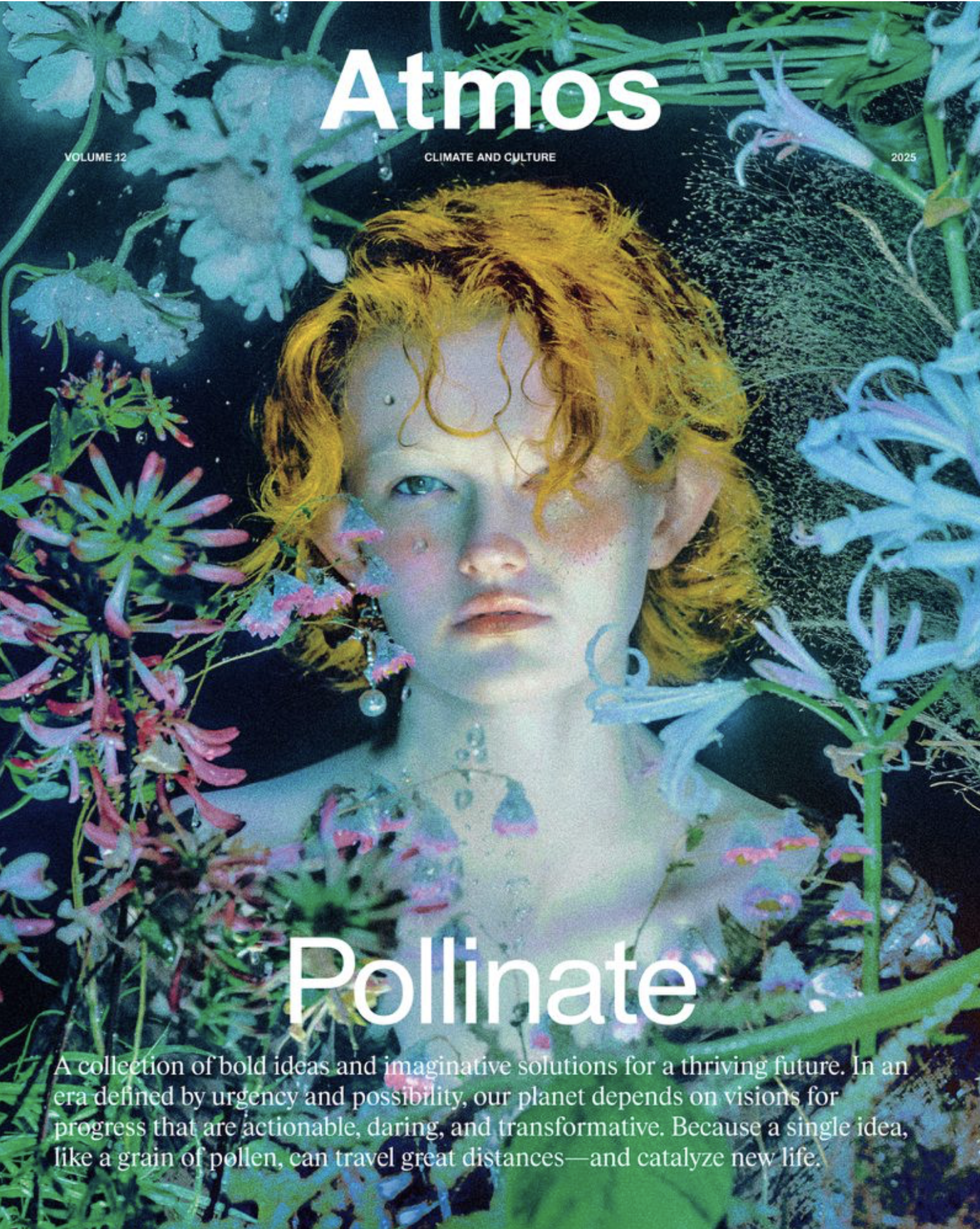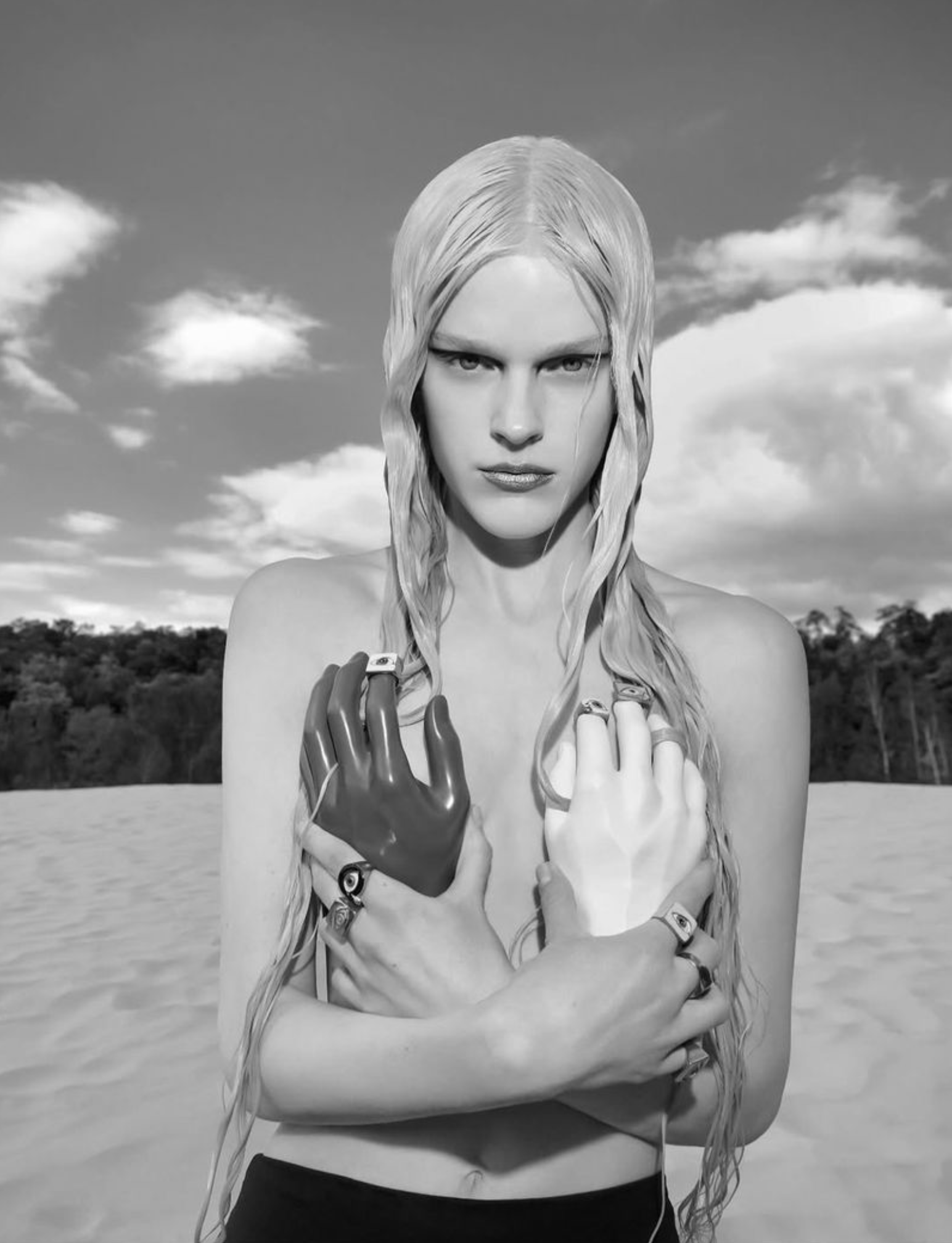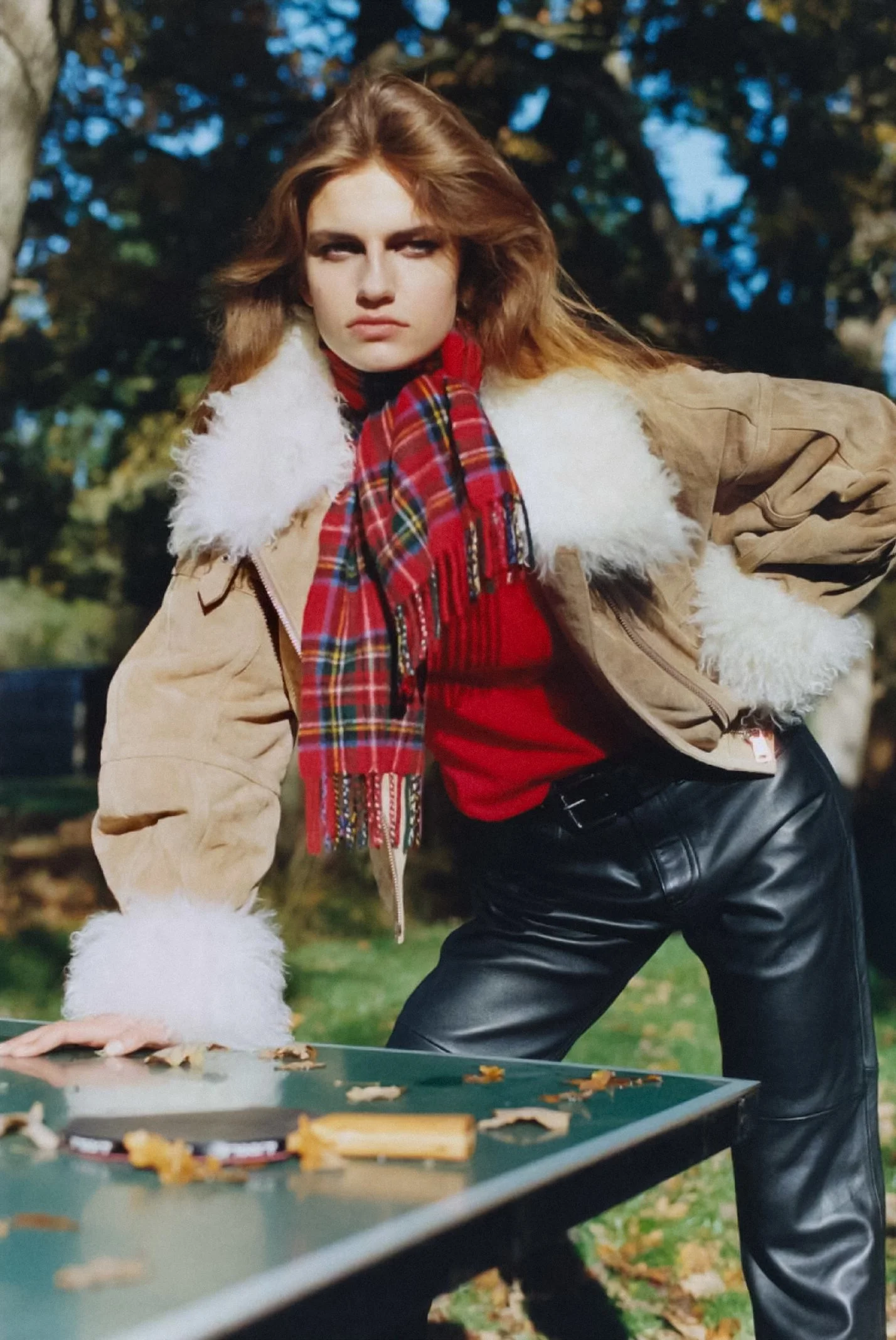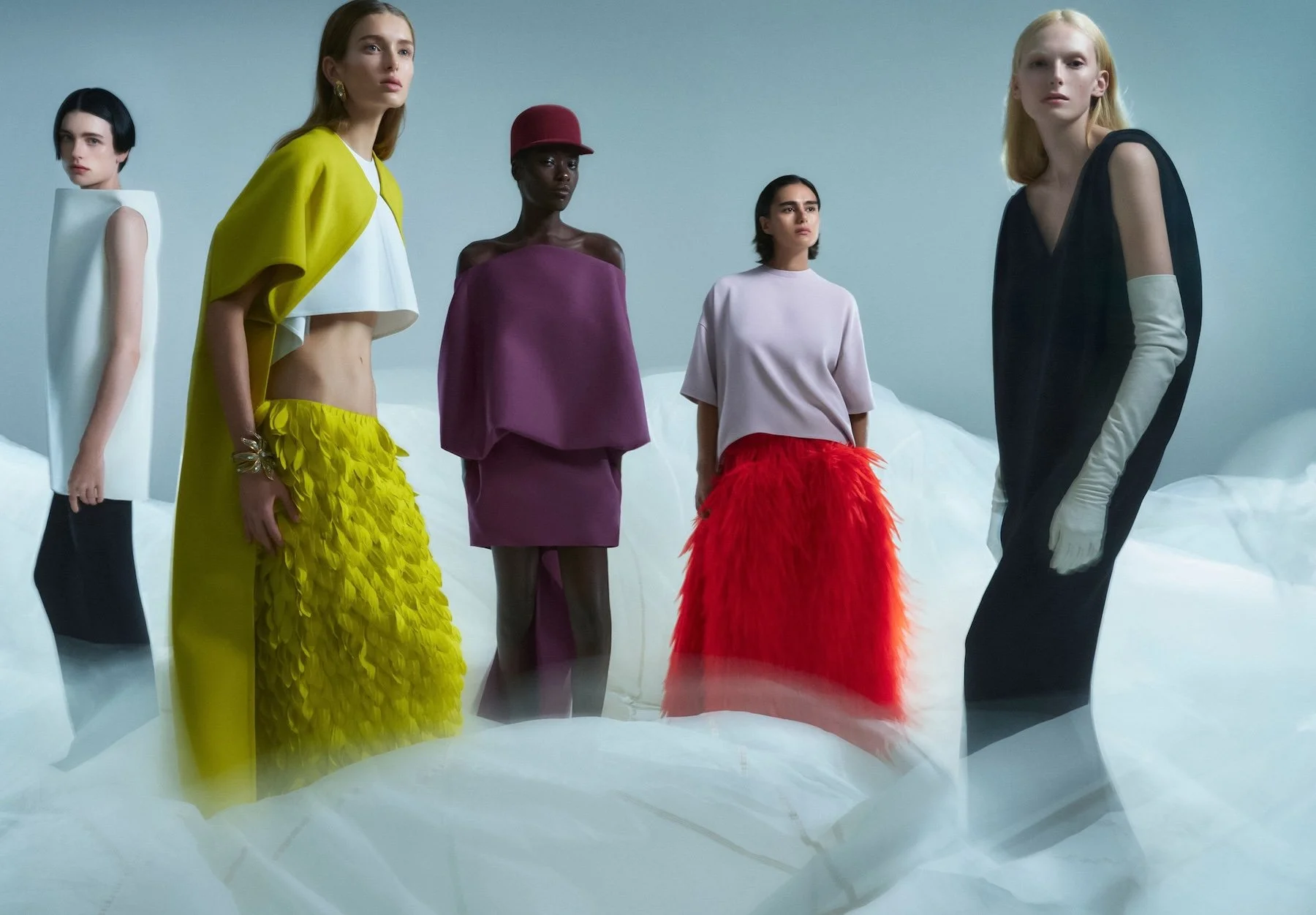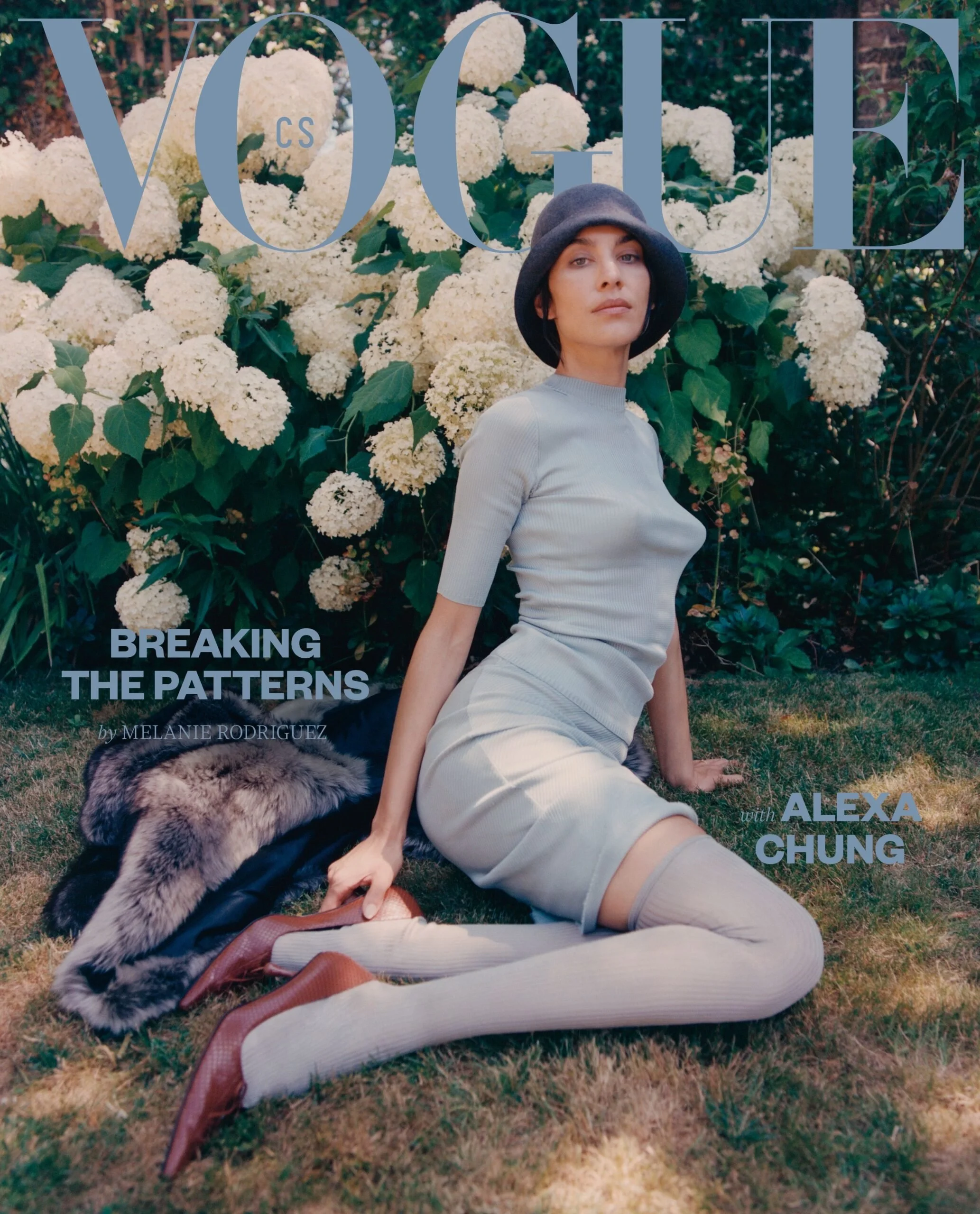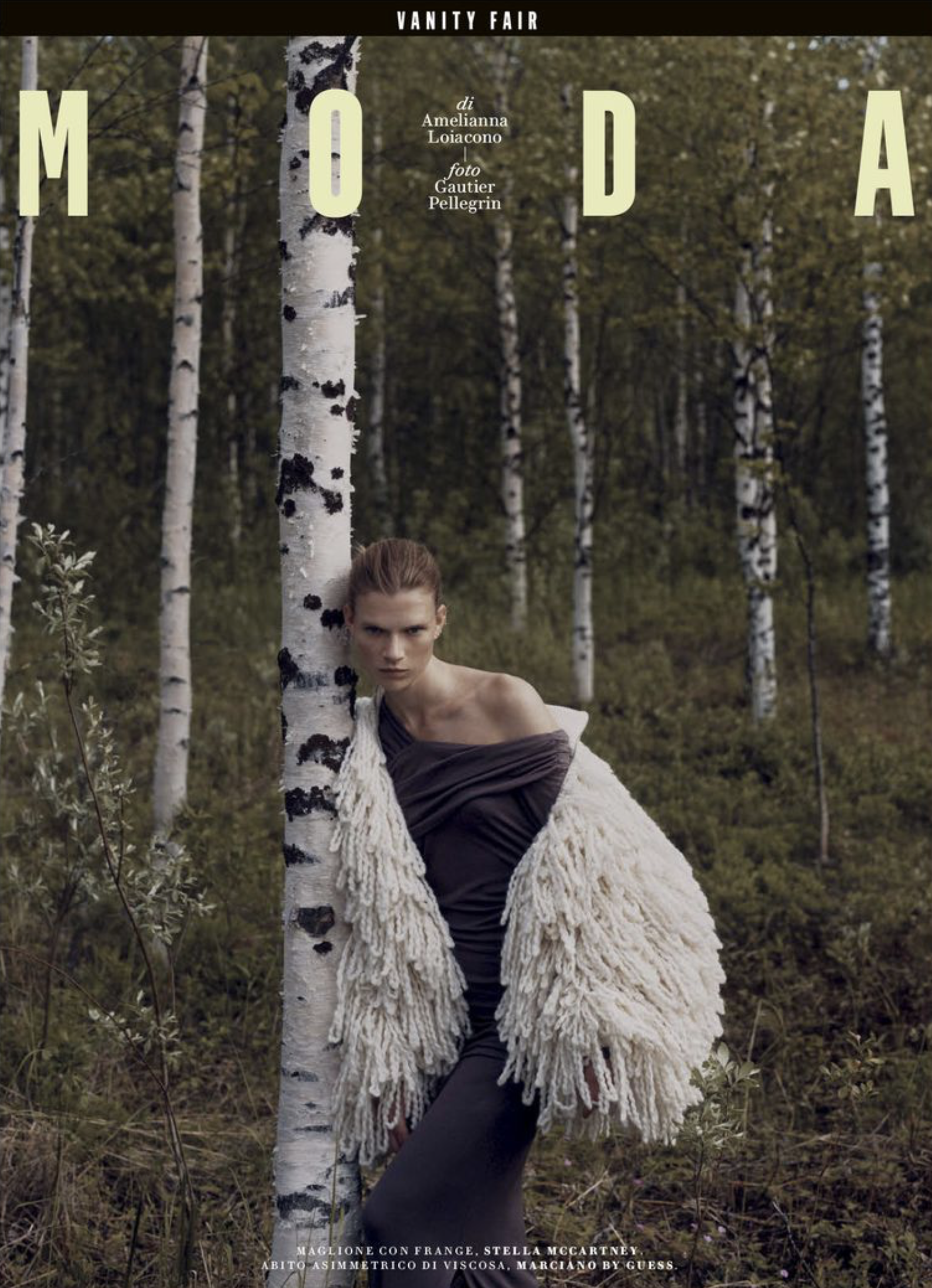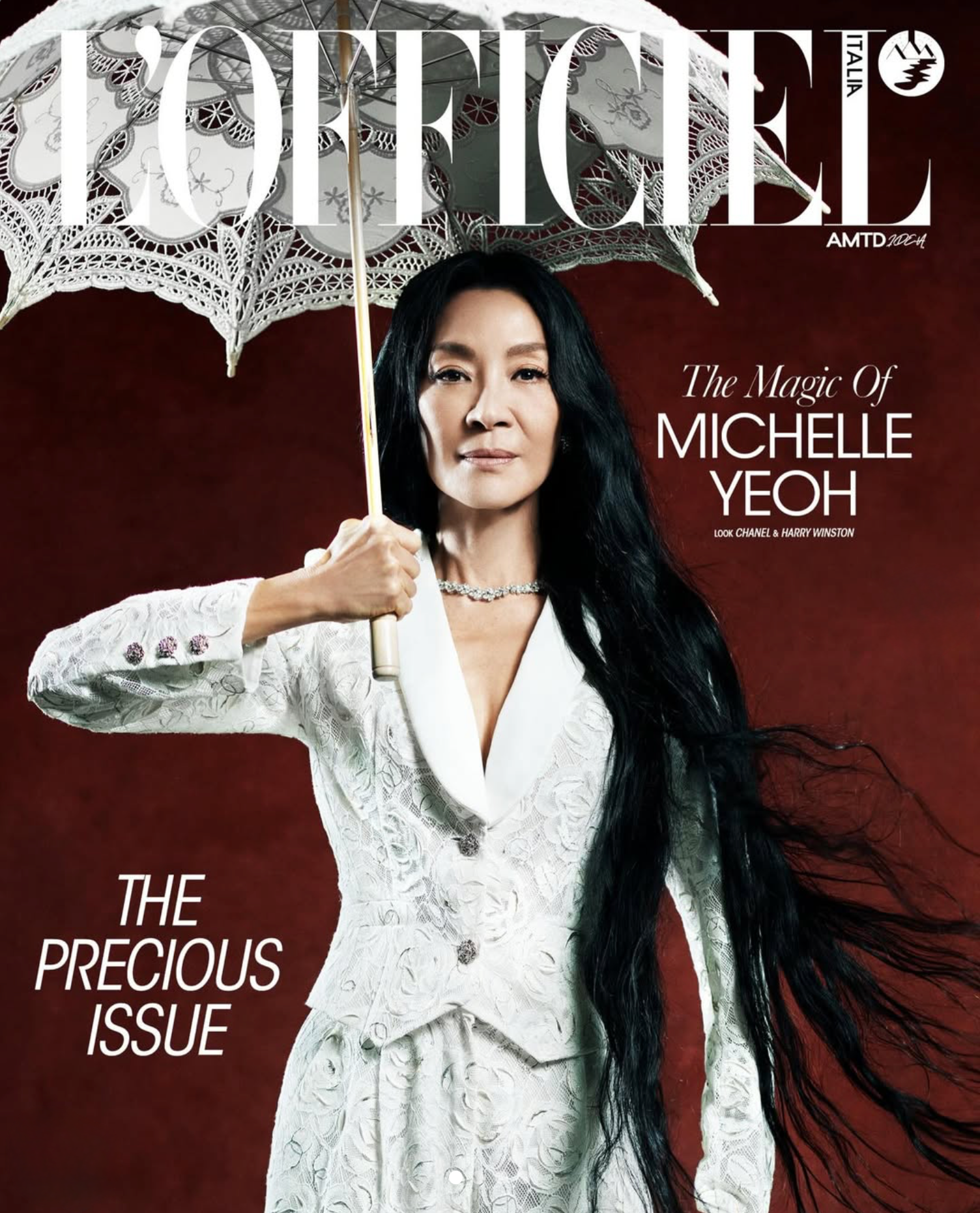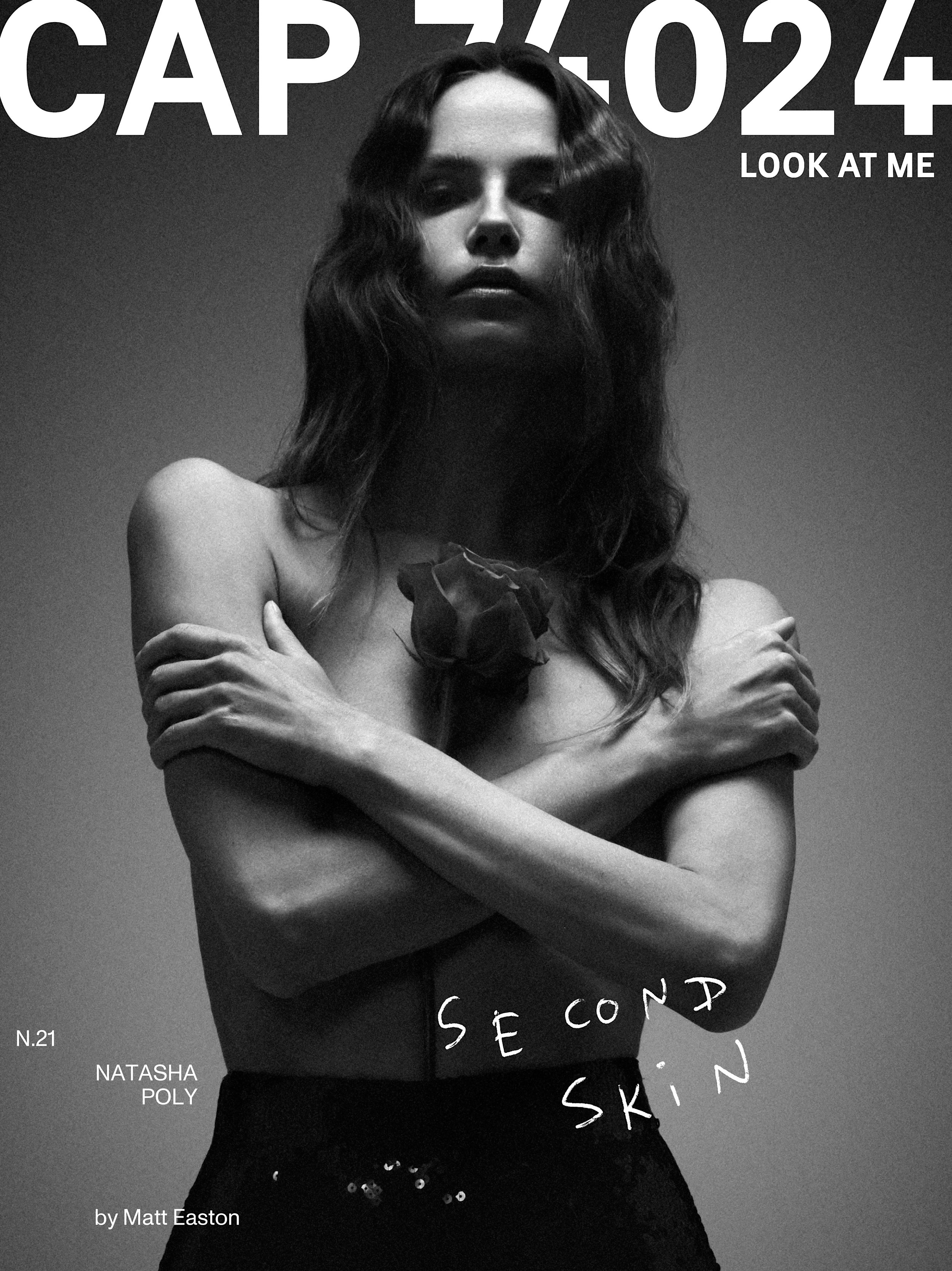Anna Murphy's Critical Insights in 'Body Beautiful' for Harper's Bazaar UK
/Models Molly Constable and Seynabou [Zeyna] Cissé cover Harper’s Bazaar UK’s August 2021 ‘The Body Issue’. Shibon Kennedy styles the duo in ‘Body Beautiful’, a visual and written-word reflection on curves lensed by Pamela Hanson [IG] with words by Anna Murphy.
Murphy is fashion director of The Times and The Sunday Times [UK] since 2015. Previously she launched ‘Stella’ at The Sunday Telegraph, also London-based. Murphy is unusually honest in sharing her thoughts about curves and female ‘flesh’ generally-speaking.
Her comments, which AOC shares briefly here, are stellar. First-rate superb. Follow this link to Anna Murphy’s thought-provoking essay ‘Behind the curve: how the final frontier of the fashion industry is being broken down at last.
‘90s Supermodels Required Downsizing
One topic that Anna Murphy omits from her narrative — very much discussed in the archives of AOC — is the downsizing of models from size 4-6 to size 0. Surely she will pick up this fact in the future, because while full-size women — sizes 12 or 16 or 20 — have never flourished in fashion, the industry took very direction action against female body beauty standards in the mid-90s.
We would be curious to hear Anna Wintour’s explanation of why the original supers including Cindy Crawford, Christy Turlington, Naomi Campbell — of course — and the rest of the crew gave way to Kate Moss and a heroin-chic beauty standard. The change was so drastic that it required models to peel off tens of pounds in weight — even if it meant eating energy drink-soaked cotton balls for sustenance — and denouncing every curve and appearance of work-out muscle on their bodies.
The average size of American women has increased considerably, but in the ‘90s heyday of the original supers, 25% of American women were the same size with exercise and healthy diets. And then - for reasons none of us know exactly — models could never be thin enough. As American women — and Brits, too — gained weight for many reasons, size 0 became the standard of beauty in the fashion industry.
French and Italian women remained factually better in weight management, and this fact is too complex to launch into here and now. Yours truly has had plenty to say in the past — and into the archives we go this week.
Size 0
Even if you believe that size 0 is a desirable beauty goal — AOC does not, if it means risking anorexia rather than being naturally a size 0 — it’s unattainable for 95% of the women in most countries worldwide. There are some exceptions among Asian nations, and absolutely the rise of the luxury market in China and throughout Asia has had business impacts on the world’s beauty standards — as it should.
Bottom line, though, much more sinister aims have played in and around this topic of beauty standards and flesh. I will use the word ‘flesh’ because Murphy did, and I LOVE that she did. I am grateful that she is again opening this door of discussion around women and flesh.
The Necessary Downsizing of Feminism . . .
AOC has always said the the supers were too damn confident, too sexy, too successful, too relatable — that they were threatening in ways the industry has never really discussed. And so they had to be cut down to size — literally. Heroin chic replaced a very healthy, California girl (among the American models) spirit. Naomi — well Naomi presented her own sort of threat to the status quo on multiple fronts.
Cindy Crawford has said many times that the original supermodels would have been too big — too fat — for fashion’s taste in the years that followed their success. ‘Why’ has always been a question propelling dialogue at AOC.
I agree — and have written extensively — that patriarchy had much to do with fashion’s struggle to embrace flesh. The rise of right-wing, social conservative values and religion was hard at work keeping women in line — and that includes our bodies first and foremost.
I agree — and have written extensively — that patriarchy had much to do with fashion’s struggle to embrace flesh. The rise of right-wing, social conservative values and religion was hard at work keeping women in line — and that includes our bodies first and foremost.
Murphy quote my FB friend Susan Bordo — who close friends brought to my attention several years ago. Susan also writes about religion and the management of flesh from Biblical times to the present.
. . . Has Hit Women of Color Particularly Hard
All women have paid a high price over body management by religious zealots, but women of color have paid the highest price. In every dialogue of this nature, we must take the experiences of white women and double-triple them for women of color.
Murphy only has a one-pager in Harper’s UK, but hopefully she intends to use her platform to amplify her message going forward on this topic.
Anna Murphy considers the origin of the so-called ‘thin ideal’ that has been in ascendancy over the last century.
In her book ‘Unbearable Weight: Feminism, Western Culture, and the Body’, Susan Bordo argues that it’s about 'the tantalising ideal of a well-managed self in which all is kept in order'. That this has had a greater hold over women than men is because "throughout dominant Western religious and philosophical traditions, the capacity for self-management is decisively coded as male. By contrast, all those bodily spontaneities – hunger, sexuality, the emotions – seen as needful of containment and control have been culturally constructed... as female." Golly.
And so, to follow Bordo’s argument, modern women – or at least those in "late modern Western societies" – have used their bodies to demonstrate to others that they can do, be, live as men do; that they can subjugate their "domestic, reproductive destiny".
I told you the essay is provocative!! ~ Anne

